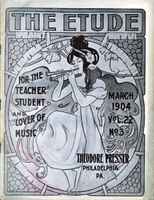BY C. SAINT-SAENS.
[Saint-Saëns, the composer, who is spending part of the winter in Egypt, has written a choral composition entitled "Hymne a la France," which is to be used in French schools and colleges. We reproduce below an extract from the report addressed by Mons. Saint-Saëns to the Minister of Public Instruction and Fine Arts on the subject of the introduction of music study into the school system.—Ed.]
"Obligatory instruction in music in schools is a measure the results of which cannot be estimated from the point of view of its elevating influence on the musical standards of our country. The development of musical culture is the indication of a superior civilization. An understanding of this truth is necessary as an impetus to pursue the work with every possible energy.
"Until the present time it was believed that in the foundation and encouragement of male choral societies a sufficiently powerful influence for good was at work. While this movement is popular and no doubt excellent it is insufficient, for the reasons that these societies are made up of adults who take up the study too late in life to make it profitable, and women not being eligible are deprived of even the advantages and atmosphere in which lies their chief value.
"The study of elements of music which sometimes presents unattainable difficulties to adults is but mere play for children. By introducing this study in the schools there would be as a result, and without effort on their part, generations of young people of both sexes prepared to take up singing as soon as their voices we're formed.
"In addition there would be a gradual elevation of the masses, so large a proportion of which prefer songs of the popular or grotesque order. They would learn the pure and elevating enjoyments of ensemble music.
"It is my opinion that until experience has shown in which direction the work could be pursued to the best advantage, that schools in the early grades should be taught solfeggio in one or more parts or voices; this study should begin as soon as the children can read fluently; an inspector would have to examine and assign these solfeggio exercises according to the several needs, simple forms being the best. The excellent solfeggio by Batiste, or some older and more elementary works could be chosen; the teacher would suffer only from an embarrassment of choice."



